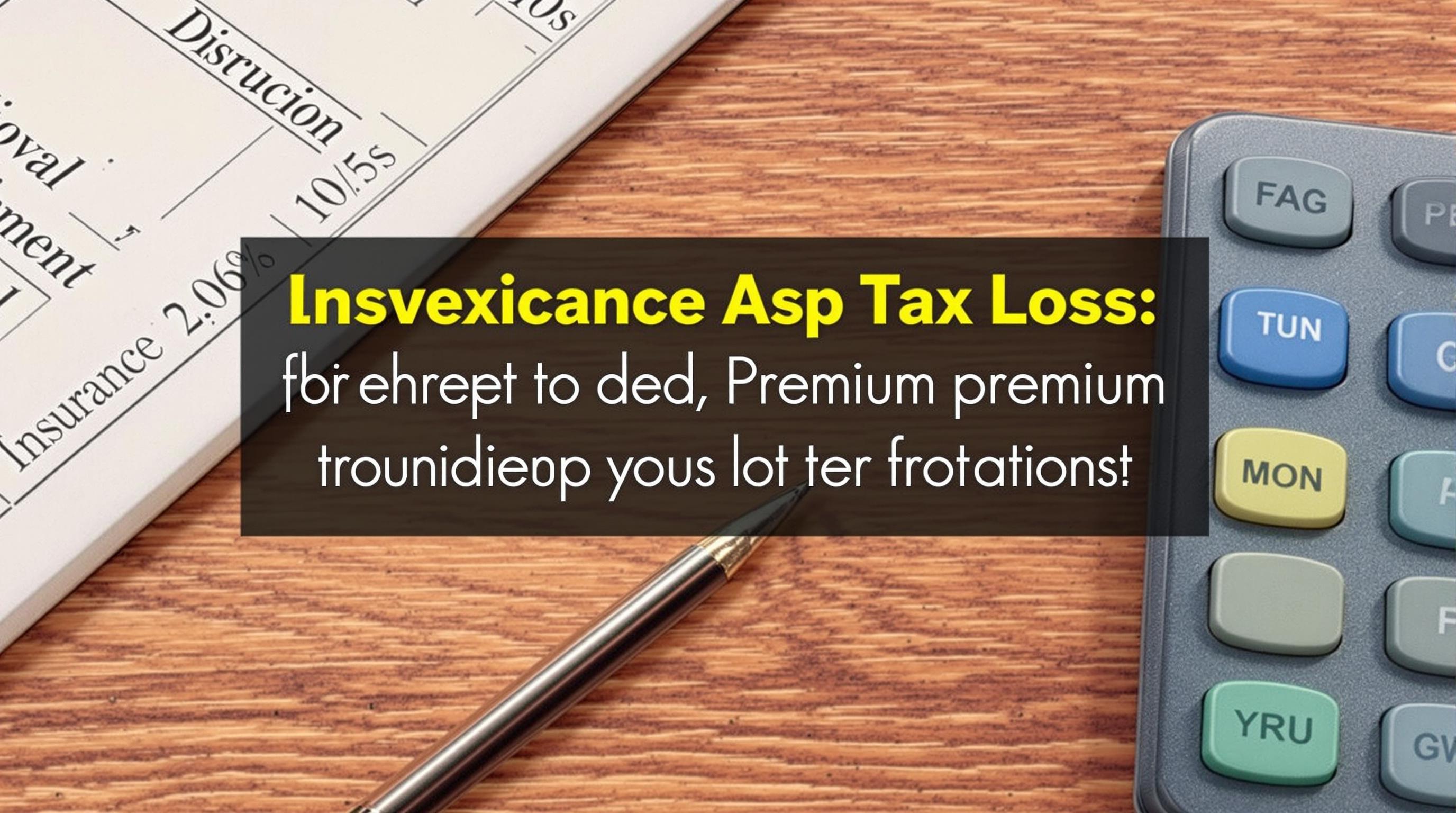Related Articles
- Top 7 Game-Changing Riders Released Since 2019 That Redefine How You Customize Your Life Insurance Coverage
- Top 5 Game-Changing Insurance Add-Ons from the Past Five Years Redefining Rider Benefits and Coverage
- The Silent Impact of Guaranteed Issue Insurance on Elderly Mental Health and Community Social Networks
- Top 6 Emerging Simplified Issue Policies Since 2019 That Redefine Risk and Flexibility for Modern Buyers
- How Changing Remittance Intervals Influence Insurer-Provider Partnerships in Healthcare Coordination
- How Seasonal Spending Cycles Secretly Shape Insurance Premium Timing and Consumer Choices
Top 5 Life Insurance Policies From the Last Five Years and Their Surprising Tax Consequences Revealed
Top 5 Life Insurance Policies From the Last Five Years and Their Surprising Tax Consequences Revealed
Over the past five years, several life insurance policies have stood out not just for their coverage but also for unexpected tax implications that policyholders should be aware of. This article unpacks the top five policies, revealing surprising tax consequences through a mix of storytelling, data, and expert insights to help you navigate your choices wisely.
Understanding the Basics: Why Tax Matters in Life Insurance
Imagine this: you’ve just paid off a life insurance policy, feeling relieved, only to discover that your beneficiaries might owe taxes on the payout. Sounds like a horror story, right? Unfortunately, many policyholders overlook taxes until it’s too late.
Life insurance isn’t just about the premium and payout; the tax treatment can significantly impact the net benefit. In the United States, the death benefit is generally income tax-free, but there are exceptions and complex scenarios involving cash value and policy loans which could trigger taxable events.
According to a 2022 survey by LIMRA, about 25% of Americans mistakenly believed life insurance payouts are always fully tax-free. This misunderstanding can lead to costly surprises.
The Mystery of the "Modified Endowment Contract" (MEC)
Ah, the Modified Endowment Contract — a phrase that sends chills through many life insurance buyers. It’s a special category of life insurance policy entered into when the policy is funded beyond the IRS premium limits. The key consequence? Distributions (including loans) from MECs are taxed as income and can also carry penalties if the owner is under 59½.
Case Study: Sarah, a 42-year-old entrepreneur, purchased a highly funded whole life policy in 2019. Unaware that it was classified as a MEC, she took a loan of $50,000 in 2022 expecting it to be tax-free. Instead, she faced a $10,000 tax bill plus a penalty, which caused significant financial stress.
The Top 5 Life Insurance Policies: What You Need to Know
1. Universal Life Insurance – Flexible but Tricky
Universal Life (UL) offers flexibility in premiums and death benefits, making it popular among middle-aged buyers (ages 35-60). However, “flexible” doesn’t mean “simple.” The taxable consequences, especially with policy loans and withdrawals, require a deep understanding.
UL policies accumulate cash value over time, and withdrawing this cash value beyond the cost basis can trigger taxable events. Moreover, lapsing policies with outstanding loans could create unexpected income tax liabilities.
Example:
John, aged 50, withdrew $30,000 from his UL cash value which had a basis of $20,000. The $10,000 gain was taxed as ordinary income in 2023, decreasing his expected net return.
2. Indexed Universal Life (IUL) – Growth Potential with Tax Deferral
Certainly one of the trending policies, IUL links cash value growth to a stock market index, offering upside potential without direct market risk. Its strong tax advantage is the tax-deferred growth of cash values.
But beware: taking loans from an IUL can lead to policy lapses and unintended taxable income if not managed prudently. IRS guidelines can be labyrinthine here.
3. Term Life Insurance – Simplicity is Its Strength
Might seem boring, but term life’s simplicity is its charm — typically just a pure death benefit with no cash value accumulation, so minimal or no tax consequences for beneficiaries. However, converting term to permanent policies needs careful tax planning since new contract rules come into play.
Statistic: Term life policies make up over 60% of new life insurance sales in the US (Insurance Journal, 2023), largely due to affordability and straightforward tax treatment.
4. Whole Life Insurance – The Classic Vehicle with a Twist
Whole life insurance has been the stalwart of life insurance for a century, offering predictable premiums and steady cash value accumulation. Dividends can be used to reduce premiums or add to cash value, often growing tax-deferred.
However, cash surrender or policy loans could create taxable income, especially if the policy’s basis is exceeded. Additionally, some policies could become modified endowment contracts if overfunded.
5. Guaranteed Universal Life (GUL) – The Silent Saver
A newer variant, Guaranteed Universal Life insurance provides the death benefit guarantees of term life with some cash value perks but at a lower cost than traditional whole life. Tax implications are generally favorable—death benefits paid income tax-free and minimal cash value gains.
But the kicker? If the policy lapses while it has a loan, taxable income may be triggered, which often surprises even savvy investors.
A Cautionary Tale: The Forgotten Tax Bill
Let me share a quick story. James, a 58-year-old retiree, invested heavily in an IUL policy five years ago. Hoping to supplement retirement income, he began withdrawing cash value prematurely. Unfortunately, he triggered a “lapse” situation without realizing it.
Come tax season, James faced a $15,000 tax bill on distributions he thought were tax-free, putting a dent in his retirement planning. It illustrates how critical it is to work closely with tax professionals before making any policy loans or withdrawals.
Tax Planning Tips for Savvy Policyholders
So, how can you avoid these pitfalls?
- Know the Contract Type: Determine if your policy is a MEC.
- Regularly Track Cash Value Basis: This helps you understand what portion of withdrawals is taxable.
- Consult Tax Experts: Especially before taking loans or surrendering policies.
- Plan for Policy Lapses: Understand tax consequences if your policy lapses with an outstanding loan.
- Review Annually: Life circumstances and tax laws change, so review your policy regularly.
Statistics That Might Surprise You
Did you know that approximately 40% of life insurance policies with cash value in the US lapse or are surrendered each year? (Source: American Council of Life Insurers, 2023). Many policyholders are not aware that lapsing with loans outstanding can result in unpleasant tax bills.
A Humorous Take: The Taxman’s Unexpected RSVP
Imagine planning a peaceful family picnic (your life insurance policy), only to have an unexpected guest, Uncle Taxman, crashing the party complaining about unpaid dues. It may seem exaggerated, but it’s exactly what happens when you overlook tax consequences associated with your insurance contracts.
Life insurance is often marketed as the ultimate protection against financial disaster, but a tax surprise can certainly spoil the joy.
Wrapping It Up: The Bottom Line
Life insurance products have evolved with varying benefits, but their tax consequences remain a complex maze. Knowing the top policies and their unique tax traits empowers you to choose wisely and avoid costly surprises for you and your beneficiaries.
Remember, the best policy isn’t simply about low premiums or high death benefits—it’s also about smart tax planning and aligning the product to your financial goals.
About the Author
David, aged 45, is an experienced financial writer with a passion for demystifying economics and personal finance. His mission is to help readers aged 16 to 70 understand complex financial concepts with clarity and humor.




